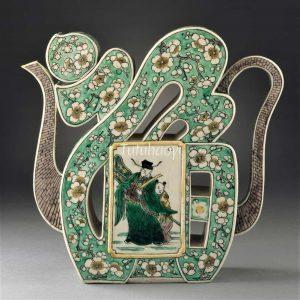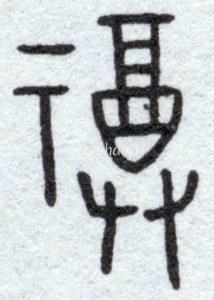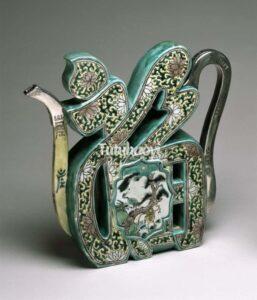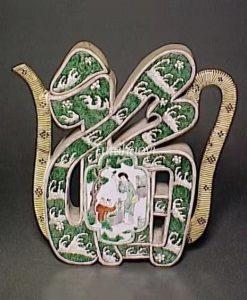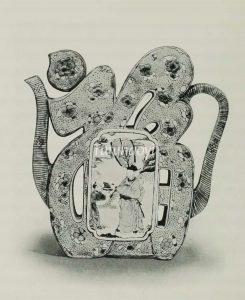Good Fortune
福
© Tutuhaoyi.com owns the copyright of the description content for the images attached. Quoting all or part of the description content on this page is permitted ONLY IF ‘Tutuhaoyi.com’ is clearly acknowledged anywhere your quote is produced unless stated otherwise. (本页描述内容版权归Tutuhaoyi.com所有,转发或引用需注明 “Tutuhaoyi.com”, 侵权必究, 已注开源信息的条目除外。)
In the oracle bone script, the earliest form of the Chinese characters, the pictograph ‘福 (fu)’ consists of a pair of hands holding a wine jar in front of a sacred ancestral symbol. It means that, if the ancestors were pleased properly with right offerings, good fortune would come to bless the descendants.
Read here for an account of how the ‘福 fu’ character became a poster on people’s front door on the first day of the Chinese New Year.
More than two millennia ago, the Chinese had their ideals in life summarised as ‘五福 wu fu’, the Five Blessings, and recorded them in the Book of Documents (书经 Shujing) in the Zhou Dynasty (c. 1046 – 256 BCE). They are ‘longevity 寿 shou’, ‘wealth 富 fu’, ‘wellbeing and peace 康宁 kang ning’, ‘love of virtue 攸好德 you hao de’, and ‘natural death 考终命 kao zhong ming’.
The old and auspicious ideal embodied in the ‘福 fu’ character is often represented artistically with images of bats in Chinese decorative arts. It is not because the Chinese appreciate the appearance of bats, but because ‘蝠 fu’, the Chinese name for bats, happens to pun on ‘福 fu’ for ‘good fortune’.
In Late Imperial China, the ‘福 fu’ character was personified by the Star God of Good Fortune (福星 fu xing), a figurine of a male deity, who was one of the trio of the ‘Three Star Gods (三星 san xing)’. The other two companions were the Star God of Emoluments (禄星 lu xing) and the Star God of Longevity (寿星 shou xing).
literature research by Dr Yibin Ni
Fig 1: lidded ewer with overglaze enamelled decoration on biscuit, Kangxi period (1662-1722), courtesy of Los Angeles County Museum of Art, No. 30.2.88a-b
Fig 2: oracle bone script of 福 (fu)
Fig 3: wine ewer with overglaze enamelled decoration on biscuit, Kangxi period (1662-1722), courtesy of The Walters Art Museum, Baltimore, USA, Number 49.2347
Fig 4: wine ewer with overglaze enamelled decoration on biscuit, Kangxi period (1662-1722), courtesy of The Guimet Museum, Paris, Number G 3365
Fig 5: wine ewer with overglaze enamelled decoration on biscuit, Kangxi period (1662-1722), courtesy of the Victoria & Albert Museum, London, Number C.1261&A-1910
